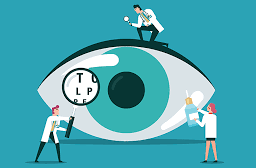
Overcoming White Coat Syndrome: Coping Tips for Medical Anxiety
Entering the doctor’s office can trigger a cascade of nerves for many individuals, with the phenomenon known as White Coat Syndrome casting its shadow. Picture this: you take a seat in the waiting area, and suddenly your palms get clammy, and your heart races. What follows is a genuine struggle against the anxiety that intensifies in the presence of medical professionals. It is a recognized condition where the anticipation of a clinical setting induces elevated stress levels. In this exploration, we’ll delve into the intricacies of White Coat Syndrome, understanding its roots, and uncovering practical strategies to navigate and conquer the anxiety that often accompanies healthcare visits.

We’ve all been there. The moment you step into a doctor’s office, your heart starts racing, your palms get sweaty, and you suddenly feel like you’re about to face a firing squad. No, it’s not because you’ve been binge-watching medical dramas on Netflix. It’s a real phenomenon and it affects millions of people worldwide.
What is White Coat Syndrome (WCS)?

The name WCS, also known as White Coat Hypertension, White Coat Anxiety or White Coat Effect, comes from the traditional white lab coats worn by doctors, which have become synonymous with the medical profession. It is a phenomenon where a person experiences elevated blood pressure readings in a clinical setting, typically in the presence of doctors or other medical professionals. It is a condition in which an individual experiences elevated blood pressure and anxiety when visiting a medical professional, often in a clinical setting. It’s as if our brains have been conditioned to associate those pristine white coats with impending doom. It’s like your body decides to throw a party for your blood pressure as soon as you step foot into a doctor’s office. But fear not! You’re not alone in this battle against your own body’s irrational response.
The Causes of WCS

So, what causes this peculiar syndrome? Well, there isn’t a single answer that fits all cases.
Anxiety and Fear: Some people may have a general fear of medical procedures or an underlying anxiety disorder. And let’s not forget the good old fear of the unknown – not knowing what the doctor might find during an examination can be anxiety-inducing.
For some, it may be a result of a previous traumatic medical experience, like that time you got a shot and swore off needles forever. Previous negative experiences or fear of medical procedures can contribute to anxiety levels.
Apprehension of Medical Environments: The clinical setting, medical equipment, or the perceived vulnerability associated with being examined can trigger stress.
Lack of Control: Feeling helpless or uncertain during a medical examination can intensify anxiety.
It is also worth mentioning that the environment of a doctor’s office itself can contribute to WCS. The sterile smell, the uncomfortable waiting room chairs, and the constant reminder that you’re about to be poked and prodded can all add to the stress. Plus, let’s not forget those intimidating medical posters on the walls, showcasing every possible ailment known to mankind.
Symptoms and Consequences

The symptoms of WCS can vary from person to person. Some may experience a rapid heartbeat, sweating, dizziness, or even shortness of breath. Others may have a sudden urge to flee the scene, like a gazelle being chased by a hungry lion. It’s important to note that these symptoms are not just limited to the doctor’s office; they can also occur when thinking about upcoming medical appointments or even when seeing medical-related images or videos.
While WCS may seem harmless on the surface, it can have serious consequences if left unchecked. Elevated blood pressure readings during medical visits can lead to misdiagnosis and unnecessary treatments, which can further exacerbate anxiety and perpetuate the cycle of fear. It’s a vicious cycle where your fear of doctors becomes a self-fulfilling prophecy.
Coping Tips for WCS

Now that we’ve explored the dark depths of WCS, it’s time to shed some light on how to overcome it:
The first step is acknowledging that you’re not alone in this battle. Many people share your fears, and doctors are well aware of the condition. They’re not judging you; they’re there to help.
Another helpful technique is desensitization. Gradually exposing yourself to medical environments can help reduce anxiety over time. Start by visiting a doctor’s office without any medical procedures scheduled, just to get accustomed to the environment. Then, slowly work your way up to more challenging situations, like having a routine check-up or getting a blood test. You’ll be conquering your fears like a medical superhero in no time!
Communicate with Your Healthcare Provider: One effective strategy is communication. Talk openly with your doctor about your fears and anxieties. They can provide reassurance, explain procedures in detail, help create a more comfortable environment for you, and even offer relaxation techniques to help calm your nerves. Remember, doctors are human too (despite their superhuman diagnostic abilities), and they understand that medical settings can be intimidating. Inform your doctor about your anxiety.
Practice Relaxation Techniques: Prior to your appointment, try deep breathing exercises, progressive muscle relaxation, or mindfulness meditation to calm your mind and body.
Distract Yourself: Engage in activities that divert your attention away from anxious thoughts. Listening to music, reading a book, or solving puzzles can be effective distractions.
Seek Support: Share your concerns with family, friends, or support groups who can provide emotional support and understanding.
Prepare and Educate Yourself: Knowledge about the procedures, tests, and treatments can reduce anxiety. Ask your healthcare provider for information or do some research beforehand.
Visualize Positive Outcomes: Create positive mental imagery of successful, stress-free medical visits. Visualizing a positive experience can help alleviate anxiety.
Consider Cognitive Behavioral Therapy (CBT): CBT techniques, such as reframing negative thoughts, can help manage anxiety and change your perception of medical appointments.

White Coat Syndrome can be a challenging experience, but it’s important to remember that you are not alone in dealing with this anxiety. By understanding the causes and implementing coping strategies, you can alleviate stress and make your medical visits more comfortable. Remember, open communication with your healthcare provider, relaxation techniques, and seeking support are valuable tools in managing the condition. Taking proactive steps toward reducing anxiety will help you maintain your overall well-being and ensure that you receive the care you need. WCS may be a common fear, but it doesn’t have to control your life. By understanding the causes, symptoms, and consequences of this condition, you can take proactive steps to overcome it. Remember, doctors are there to help, not to scare you. So, the next time you find yourself face-to-face with a white coat, take a deep breath, put on your brave face, and show that syndrome who’s boss!
Disclaimer: The information provided in this content is for general informational purposes only. It is not intended as medical or healthcare advice, diagnosis, or treatment. Always seek the advice of a qualified healthcare professional with any questions you may have regarding a medical condition or healthcare decisions.
















